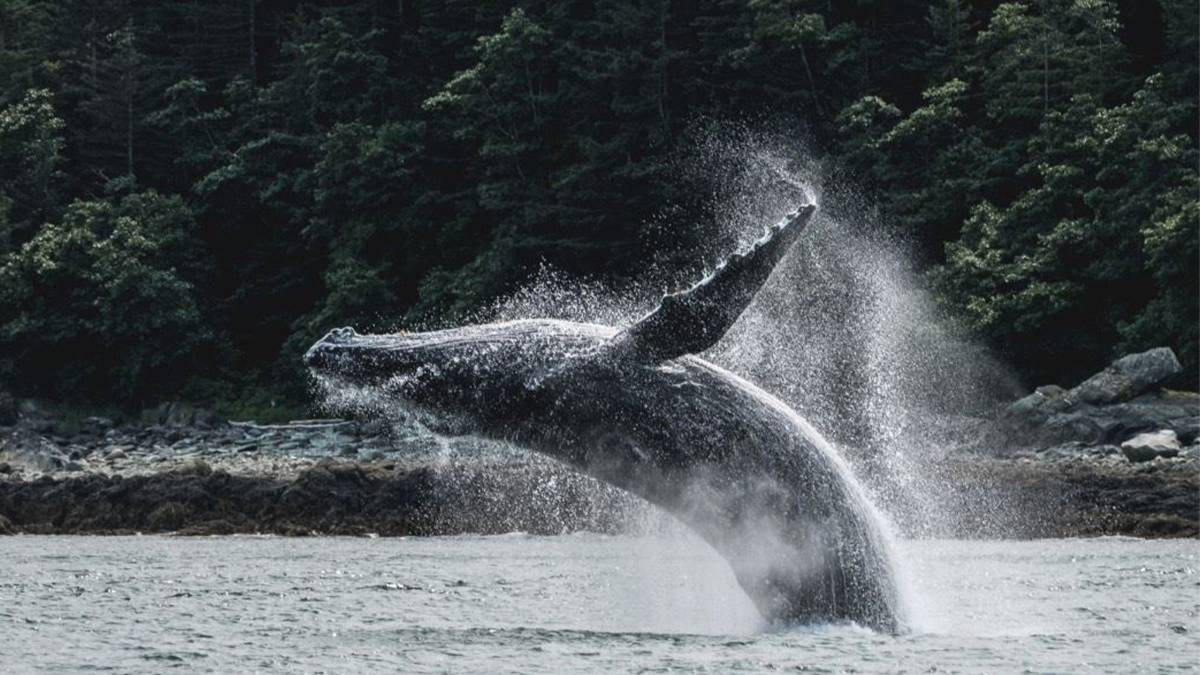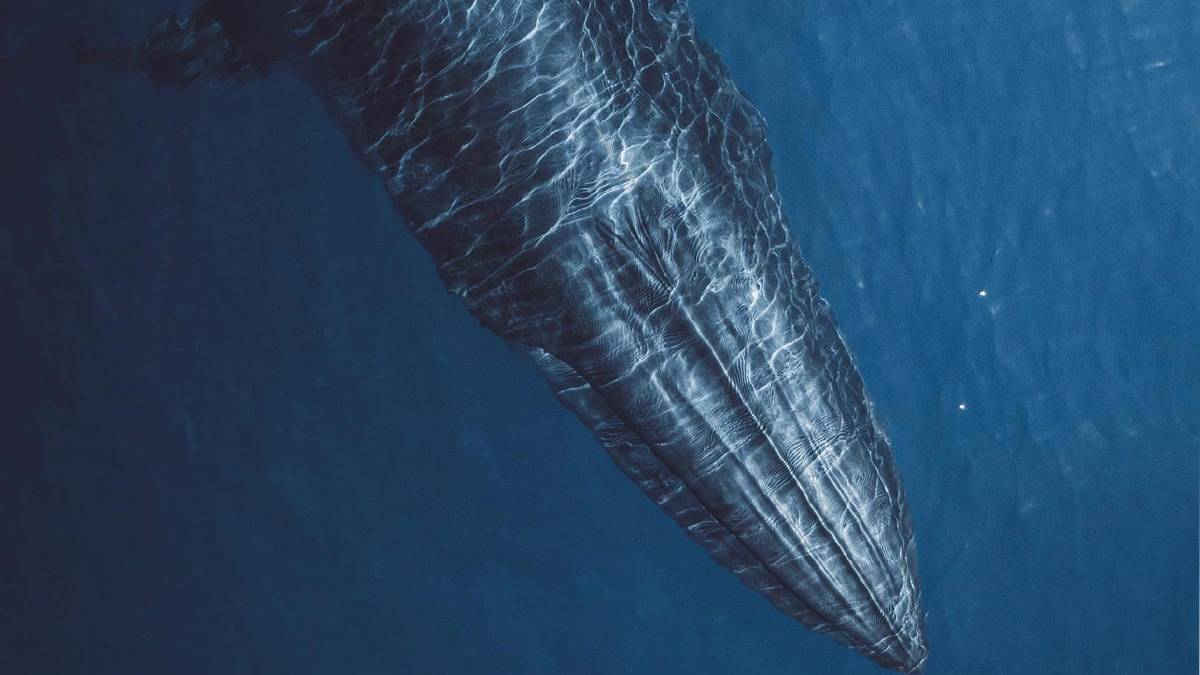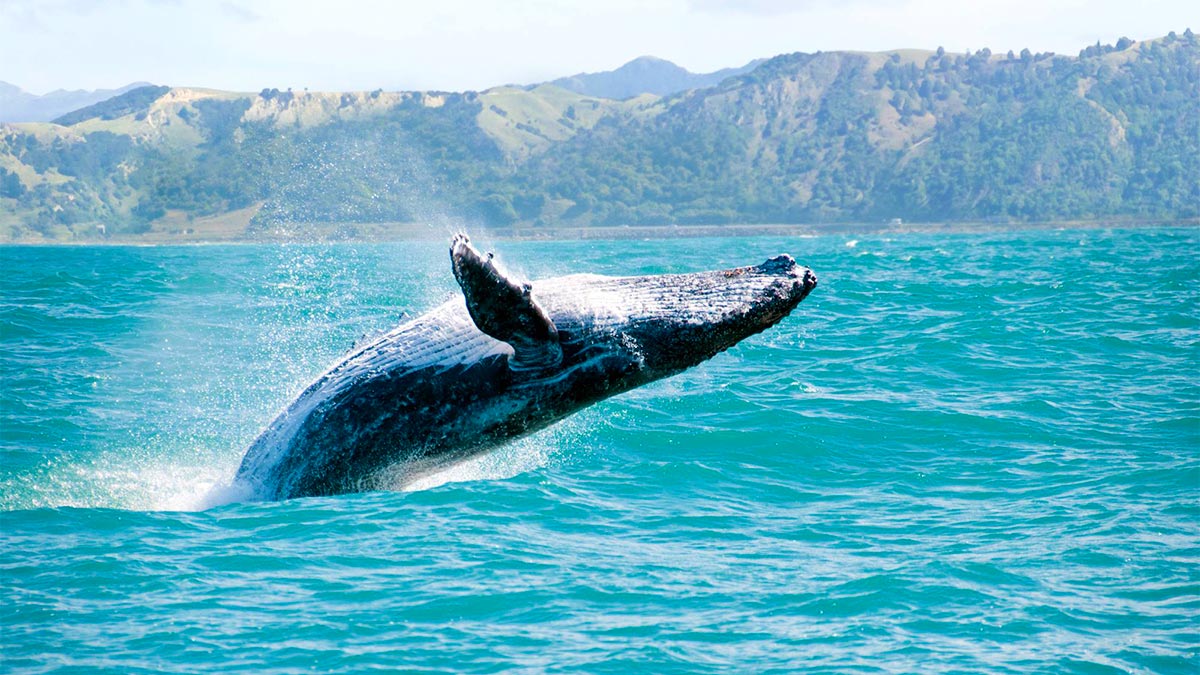Best Places For Whale Watching: Add These Spots to Your Bucket List Now!

As temperatures plunge and we move into the chillier winter months, it can be tempting to hole up inside and hit ‘pause’ on all types of outdoor activity.
The best place for whale watching might be closer than you think!
Just imagine standing on the deck of a boat, the wind tangling in your hair, and the ocean stretching out endlessly before you. Suddenly, a gigantic tail breaks the surface, sending a spray of saltwater into the sky—and you’re left breathless, in awe of nature’s splendor.
This is whale watching at its finest, a thrilling adventure where you can witness the majestic dance of these ocean giants up close and personal!
Wondering about the best place for whale watching? More specifically, the best place to go whale watching in the US?
With so many incredible places to experience this spectacle, your ultimate guide to the best whale watching spots around awaits!
Ready to plan your adventure? Let’s go! But first…
When To Plan Your Whale Watching Adventure
If you’re eager to witness the majestic dance of whales, timing is everything. The best months for whale watching vary based on your chosen destination.
For instance, in the western hemisphere, California is among the best places for whale watching as it offers sightings of the gray whale migration from December to April. Meanwhile, the Pacific Northwest entertains visitors with orcas from May to September.
Heading south, the warm waters off the coast of Maui, Hawaii create the perfect setting from November through May. On the east coast, the likes of Virginia Beach become hotspots for watching various species of whales during the winter months.
Across the Atlantic, Iceland promises an Arctic adventure between June and August. South Africa, a southern-hemisphere beacon, suggests visits from June to November to spot southern right whales as they frolic along the stunning coastline.
Ultimately, wherever you choose, ensure your plans align with the migratory paths of these gentle giants for a truly unforgettable experience. Always check local resources and tour operators for detailed, up-to-the-minute information to make the most of your adventure.
Where To See The Giants Of The Ocean
If you’re a fan of marine life, witnessing these majestic creatures in the wild should undeniably be on your bucket list. Here are a few of the best places to go whale watching in the US where you’re most likely to experience an unforgettable encounter:
Monterey Bay, California: Monterey Bay is a whale-watching jackpot! Its deep underwater canyon acts like an all-you-can-eat buffet for whales, drawing them close to shore throughout the year.
Depending on the season, you might see humpbacks doing acrobatics, blue whales gliding past like ocean tanks, or even orcas on the hunt. April to October is prime time for humpbacks and blues, while gray whales pass through from December to March.
Whale watching tours typically leave from Old Fisherman’s Wharf or Moss Landing. For land-based viewing, check out Point Lobos State Natural Reserve.
Juneau, Alaska: If you’re into next-level whale watching, Juneau is hard to beat. From May to September, humpback whales put on a show with bubble net feeding—think teamwork, bubbles, and dramatic leaps.
You’ll also have a good shot at spotting orcas, minke whales, and fin whales, all while cruising past icy glaciers. It’s one of those experiences that feels like nature’s version of a live documentary.
Tours usually depart from Auke Bay Harbor, just north of downtown. Bring a zoom lens if you want epic shots of a whale breaching in front of a glacier!

San Juan Islands, Washington: Want to experience the best whale watching Washington? This is orca country! From May to October, the waters around the San Juan Islands become one of the best places in the country to see killer whales in the wild.
Related Post: This Is Where You’ll Find the Coolest Aquarium in the US
Resident pods, transient orcas, and even humpbacks pass through these channels. Lime Kiln Point State Park on San Juan Island is one of the best places in the world to see whales from shore. And if you’re heading out on the water, tours from Friday Harbor or Roche Harbor get you right into the action.
Cape Cod, Massachusetts: Cape Cod’s waters are a seasonal hotspot for hungry whales—and that means great sightings for you!
From April through October, humpback, finback, and minke whales show up at Stellwagen Bank to feed. Tours from MacMillan Wharf in Provincetown and Barnstable Harbor offer easy access to this prime whale territory.
If you prefer to stay on land, try Race Point Beach for a shot at spotting spouts offshore. And yes, it can get breezy out there, so don’t forget an extra layer.
Maui, Hawaii: If you’re visiting Maui in winter, you’re in luck! From December to March, thousands of humpback whales arrive from Alaska to mate and give birth in Hawaii’s warm, shallow waters. It’s arguably the best place to whale watch in US at this time.
You can spot them breaching right from shore—great spots include McGregor Point Lookout, Papawai Point, and Kaanapali Beach—or join a boat tour out of Lahaina Harbor for a closer look (and maybe even hear them singing via underwater hydrophones).
Depoe Bay, Oregon: Depoe Bay calls itself the whale watching capital of the Oregon Coast—and with good reason. Gray whales hang around almost year-round, with the biggest numbers appearing during their winter and spring migrations.
Related Post: These Are the Best Family Vacation Spots in the US You Haven’t Thought Of
The Whale Watching Center, perched right over the water, offers panoramic views and expert advice. Boiler Bay State Scenic Viewpoint and Rocky Creek State Scenic Viewpoint are also excellent for land-based sightings.
Pro Tip: If you get seasick easily, you’ll love how good the viewing is from solid ground!
Bar Harbor, Maine: Bar Harbor serves up classic New England scenery with some serious whale sightings. Mid-June through October is the season, with humpbacks, finbacks, and minke whales cruising through the Gulf of Maine to feed.
Tours typically depart from the Bar Harbor Whale Watch Company pier on West Street. Cadillac Mountain and the trails along Acadia’s coast can also give you a chance to see whales from land on a clear day.
Laguna Beach, California: Laguna Beach is great for whale watching with a side of sunshine. Gray whales pass by from December to April, and blue whales show up between May and September.
Boat tours from Dana Point—just 20 minutes away—are some of the best in the region. On a clear day, you might catch a spout or breach from Heisler Park or Crescent Bay Point Park, both known for their great coastal views.

Virginia Beach, Virginia: Looking for a quieter, less crowded place to whale watch? Virginia Beach delivers!
From December to March, humpback whales migrate past the coast, often close enough to be spotted from boats heading out from the Virginia Aquarium’s dock.
Rudee Inlet also has some solid water access for casual onlookers. It’s more relaxed than the big-name whale spots but still a solid chance to see flukes, spouts, and tail slaps.
Related Post: Ghost Hunters Can’t Get Enough of These Creepy US Locations
Fort Myers Beach, Florida: Fort Myers Beach might not be top of mind for whales and dolphins, but it’s turning heads. Between January and March, humpback whales have been spotted offshore, along with dolphins and the occasional sperm whale.
Most whale watching in Fort Myers Beach tours leave from Snook Bight Marina or nearby Bonita Springs. Gulfside City Park and Lovers Key offer good shore views if you’re lucky enough to spot movement offshore.
Remember, morning departures for whale watching in Florida usually mean calmer seas and better visibility.
Santa Barbara, California: Santa Barbara’s coastal waters are a reliable place to spot whales almost year-round. Gray whales migrate through the Santa Barbara Channel from late December to mid-April, while blue whales and humpbacks show up from May to September.
Boat tours typically leave from Stearns Wharf or Santa Barbara Harbor, and many include knowledgeable naturalists onboard. If you prefer to stay on land, Shoreline Park and Douglas Family Preserve offer solid viewpoints. It’s also a great family destination with calm conditions and easy-access amenities.
Seward, Alaska: Seward, located on Alaska’s Kenai Peninsula, is a spectacular whale watching destination from May to early September. Humpback whales, orcas, and fin whales are commonly seen during boat tours into Resurrection Bay and Kenai Fjords National Park.
The rugged, glacier-dotted coastline adds dramatic scenery to your sightings. Tours often depart from the Small Boat Harbor in downtown Seward. For land-based viewing, Lowell Point offers the occasional glimpse of marine life from shore.
Raring to go? Pack your camera, grab a jacket, and don’t forget to look up from the lens every now and then—it’s even better in real life!
Safety Tips And Tricks For A Memorable Whale Watching Experience
Heading out to spot whales? Whether you’re venturing solo, with friends, or bringing the kids along, keeping safety and comfort in mind makes the whole experience smoother—and more fun. Here are a few things to know before you go:
- Listen to your guide. Tour operators know the best spots and how to keep everyone safe, including curious little ones.
- Always wear a life jacket while on a boat. For kids, double-check that the jacket fits snugly and is properly secured.
- Motion sickness is real. If you or your child tends to feel queasy, take sea-sickness medication before boarding (and pack extras just in case).
- Stay alert near the railings. If you’re with young children, keep them close and help them spot whales safely without leaning too far over.
- Respect the whales’ space. They’re wild animals—getting too close can be risky and disruptive to their natural behavior.
- Binoculars make a big difference. Great for shore-based viewing and ideal for kids who want a closer look without the splash.
- Check the forecast and layer up. Ocean air can feel chilly even on sunny days. Bring a waterproof jacket, hats, and non-slip shoes—especially helpful for little explorers.
- If kayaking, make sure your equipment is suitable for the conditions and you’re carrying safety gear. Not all tours are family-friendly, so check age requirements before booking.
- Let someone on land know your plans. Particularly helpful for solo adventurers or anyone heading out without a group tour.
A little planning goes a long way—especially when you’re with kids. These small steps can help make your whale watching trip not just memorable, but safe and stress-free for the whole crew.

Whale Watching Tours In The US
At Tripster, we know the thrill of spotting a whale tail slap or a surprise breach—and we’re here to help you catch it live!
Whether you’re chasing humpbacks in Hawaii, scanning for grays off San Diego, or hoping to see blues cruise past Los Angeles, we’ve got epic whale watching tours lined up for you. From Hawaii to the West Coast and beyond, our tours are curated for max wow-factor and zero stress.
So grab your camera, pick your spot, and let us hook you up with front-row seats to the ocean’s biggest stars!
Whale Watching FAQs
What Weather Is Best for Whale Watching?
The best weather for whale watching is typically clear or drizzle-free days with calm seas. These conditions improve visibility, making it easier to spot spouts, breaches, and tail slaps from a distance.
Overcast skies are still fine, as whales are active regardless of sunshine, but heavy rain, fog, or rough waters can make sightings difficult and boat tours less enjoyable—or even canceled. Early mornings often bring the calmest conditions, especially on coastal waters. Always check the local forecast before heading out and dress in layers, as weather can change quickly at sea.
Are Whales Friendly Towards Humans?
Generally speaking, whales are and always have been typically a friendly species, known more for their curiosity than aggression. While they’re still wild animals and should be treated with respect, many species—like humpbacks and gray whales—have been observed approaching boats calmly or even displaying playful behavior.
However, friendliness doesn’t mean domestication. It’s crucial not to approach, chase, or touch whales, as doing so can disrupt their natural behavior or put both humans and whales at risk. Observing them respectfully from a safe distance helps ensure positive encounters for everyone involved.
Whale Watching Adventures That Won’t Break the Bank
We’re all about helping you have more fun for less—think discounted rates on hotels, attractions, and vacation packages across the US.
From the feeding grounds of Monterey Bay to the scenic coasts of Baja California and national parks like Kenai Fjords, you’ll find unforgettable experiences without overspending.
Our travel guides are packed with insider tips too—like where to spot sperm whales, fin minke, and even the rare North Atlantic right whale, plus the best times to catch minke and humpback sightings. Plan smart, save more, and explore like a pro (minus the tourist traps)!
Did We Miss Anything?
Let us know in the comments below!